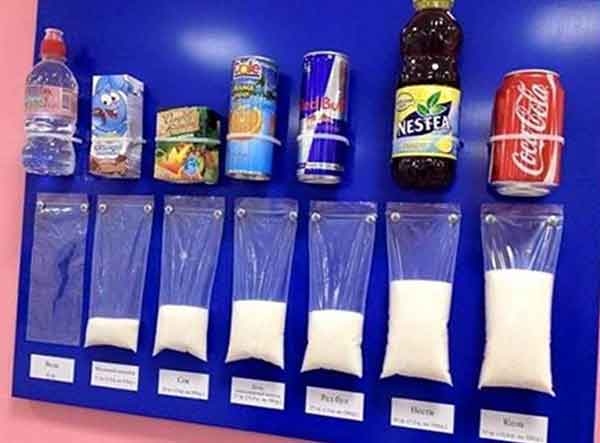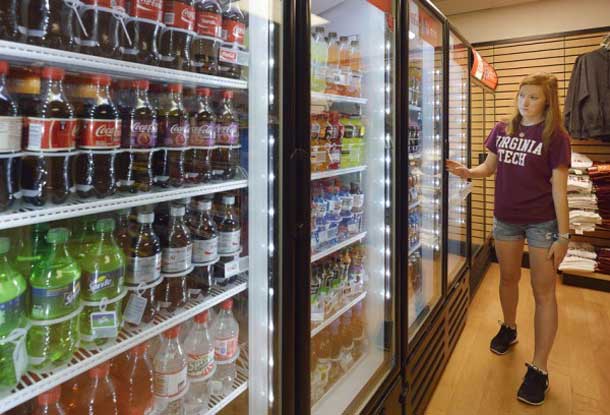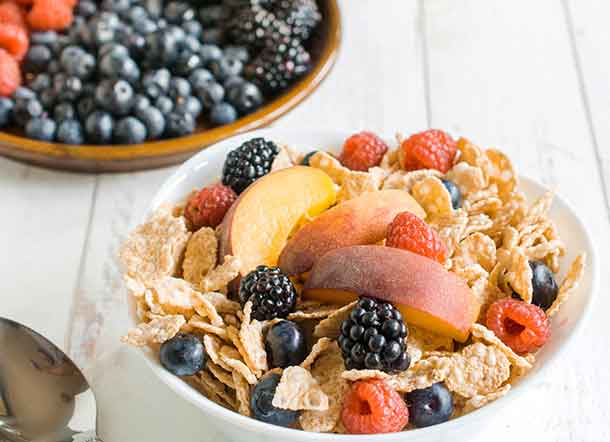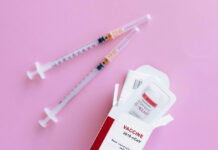
DALLAS – LIVING – All those sweet and sugary drinks are causing health concerns for youth that will add up as the years go on. The American Hearth Association Journal, Circulation reports that “Children ages 2 to 18 should eat or drink less than six teaspoons of added sugars daily, according to the scientific statement recommending a specific limit on added sugars for children”.
Six teaspoons of added sugars is equivalent to about 100 calories or 25 grams.
“Our target recommendation is the same for all children between the ages of 2 and 18 to keep it simple for parents and public health advocates,” said Miriam Vos, M.D., Ms.P.H, lead author, nutrition scientist and associate professor of pediatrics at Emory University School of Medicine in Atlanta, Georgia.
Children Are Drinking Their Age or More in Sugary Drinks Weekly
“For most children, eating no more than six teaspoons of added sugars per day is a healthy and achievable target,” stated Vos. “Children should not drink more than one 8-ounce sugar-sweetened drink a week yet they are currently drinking their age in sugary drink servings each and every week.”
Eating foods high in added sugars throughout childhood is linked to the development of risk factors for heart disease, such as an increased risk of obesity and elevated blood pressure in children and young adults.
“Children who eat foods loaded with added sugars tend to eat fewer healthy foods, such as fruits, vegetables, whole grains and low-fat dairy products that are good for their heart health,” said Vos.
The likelihood of children developing these health problems rises with an increase in the amount of added sugars consumed. Overweight children who continue to take in more added sugars are more likely to be insulin resistant, a precursor to type 2 diabetes, according to the statement.
“There has been a lack of clarity and consensus regarding how much added sugar is considered safe for children, so sugars remain a commonly added ingredient in foods and drinks, and overall consumption by children remains high – the typical American child consumes about triple the recommended amount of added sugars,” said Vos.
The statement was written by a panel of experts who did a comprehensive review of scientific research on the effect of added sugars on children’s health, which presented challenges common to this kind of nutrition research.
“Studies of nutrients such as added sugars are challenging, but over time the number of studies in children has increased,” said Vos. “We believe the scientific evidence for our recommendations is strong and having a specific amount to target will significantly help parents and public health advocates provide the best nutrition possible for our children.”
Under the Age of Two – No Added Sugar
The expert panel also recommended that added sugars should not be included at all in the diet of children under the age of 2 years. The calorie needs of children in this age group are lower than older children and adults, so there is little room for food and beverages containing added sugars that don’t provide them with good nutrition. In addition, taste preferences begin early in life, so limiting added sugars may help children develop a life-long preference for healthier foods.
Added sugars are any sugars – including table sugar, fructose and honey – either used in processing and preparing foods or beverages, added to foods at the table or eaten separately. Starting in July 2018, food manufacturers will be required to list the amount of added sugars on the Nutrition Facts Panel making it much easier to follow the recommendations in this scientific statement.

“Until then, the best way to avoid added sugars in your child’s diet is to serve mostly foods that are high in nutrition, such as fruits, vegetables, whole grains, low-fat dairy products, lean meat, poultry and fish, and to limit foods with little nutritional value,” said Vos.
Estimated calories needed by children range from 1,000 a day for a sedentary 2-year-old to 2,400 for an active 14-18-year-old girl and 3,200 for an active 16-18-year-old boy.
“If your child is eating the right amount of calories to achieve or maintain a healthy body weight, there isn’t much room in their food “budget” for low-value junk foods, which is where most added sugars are found,” said Vos.
The statement notes that one of the most common sources of added sugars is sugar-sweetened beverages, such as soda, fruit-flavored and sports drinks, sweetened teas and energy drinks.
Because of the lack of research for or against the routine use of non-nutritive sweeteners, such as aspartame, saccharine and sucralose in the diets of children, the authors felt they could not make a recommendation for or against these no-calorie sweeteners. In addition, it is not known whether the high sugar content in 100 percent fruit juices should cause the same concerns as beverages with added sugars.
Other tips for cutting back on foods with added sugars include avoiding sweet processed foods, which tend to be loaded with added sugars, such as cereal bars, cookies, cakes and many foods marketed specifically to children, like sweet cereals.
Dr. Vos noted that the 2015 Dietary Guidelines for Americans, the World Health Organization and the Food and Drug Administration recommend that added sugars should make up less than 10 percent of calories, which aligns with these guidelines.
Cutting Back the Sugar
Get started with these tips:
- Toss the table sugar (white and brown), syrup, honey and molasses. Cut back on the amount of sugar added to things you eat or drink regularly like cereal, pancakes, coffee or tea. Try cutting the usual amount of sugar you add by half and wean down from there.
- Swap out the soda. Buy sugar-free or low-calorie beverages. Water is always the best choice!
- Eat fresh, frozen, dried or canned fruits. Choose fruit canned in water or natural juice. Avoid fruit canned in syrup, especially heavy syrup. Drain and rinse in a colander to remove excess syrup or juice.
- Compare food labels and choose products with the lowest amounts of added sugars. Dairy and fruit products will contain some natural sugars. Added sugars can be identified in the ingredients list.
- Add fruit. Instead of adding sugar to cereal or oatmeal, try fresh fruit (bananas, cherries or strawberries) or dried fruit (raisins, cranberries or apricots).
- Cut the serving back. When baking cookies, brownies or cakes, cut the sugar called for in your recipe by one-third to one-half. Often you won’t notice the difference.
- Try extracts. Instead of adding sugar in recipes, use extracts like almond, vanilla, orange or lemon.
- Replace it completely. Enhance foods with spices instead of sugar. Try ginger, allspice, cinnamon or nutmeg.
- Substitute. Switch out sugar with unsweetened applesauce in recipes (use equal amounts).
- Try non-nutritive sweetenerssuch as aspartame, sucralose or saccharin in moderation. Non-nutritive sweeteners may be a way to satisfy your sweet tooth without adding more calories to your diet. The FDA has determined that non-nutritive sweeteners are safe.






